Nearly two weeks ago, Iceland’s new eruption started (I wrote a blog about it last week) and half the country flocked to see it. I don’t blame them, I’d be among them if not for the plague. But a similar eruption happened in 1973, the birth of the volcano Eldfell, and things worked out very differently.
Eldfell is on Heimaey, the largest of the Westman Islands off the south coast and the only inhabited island of the group. Its name, with typical Icelandic imagination, means “fire mountain”. Similarly to the Geldingadalur eruption, there was no volcano when it first started. A fissure just opened up and lava began to pour out. Similarly again, layers of lava on lava on lava began to grow a volcano and Eldfell is now 200m high. Time will tell what happens with the new ones.
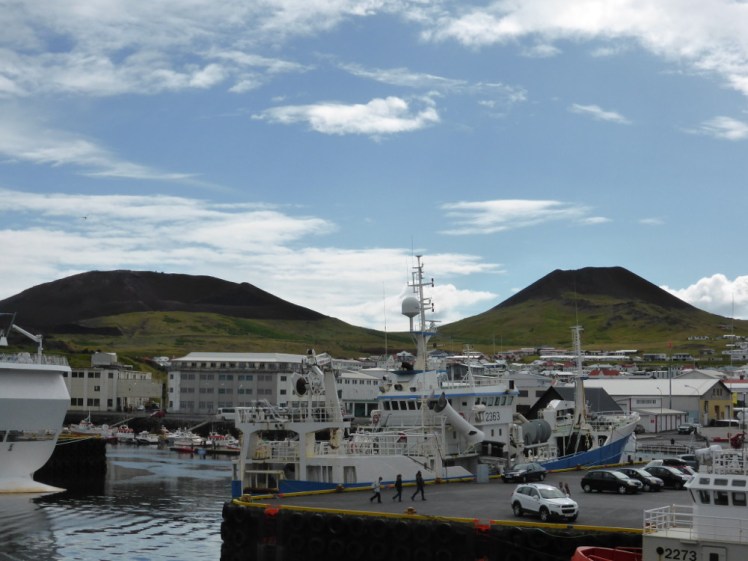
But whereas the new one is happening in a small valley in the middle of nowhere (albeit a “middle of nowhere” only 20km from Reykjavik), the Eldfell erupted happened right on the edge of a busy little town and it happened at one o’clock in the morning. On an island. It’s virtually impossible for four thousand people to shelter from a volcano on an island four miles long and two miles wide, at its longest and widest points. If it had happened on the mainland, they could have driven to a safe distance. But they had the first of a few bits of huge luck. This was January and it was a horrible stormy night. For once the fishing fleet hadn’t been able to go out which meant fathers and brothers were home and the kids had had a great evening not revising for the test they were having at school the next day. Had there not been a storm, had the fishing fleet not been in harbour, it might have been a very different story.

Fishing is a huge industry on Heimaey. Even now, in the age of tourism, and in the early 70s the entire island was dependent on it for their livelihood. That meant the fishing fleet was pretty big – big enough to pack in four thousand people to escape across the sea to the mainland. These days you’d sail across to Landeyjahöfn, the purpose-built ferry port just across the water. Back then, the ferry sailed from Þorlákshöfn, which is right over to the west, approximately where the Reykjanes peninsula meets the rest of the country. It would have taken hours, in bad weather, crammed into a dark and fishy boat, knowing that you probably weren’t ever going home again because a volcano was going to eat your house.
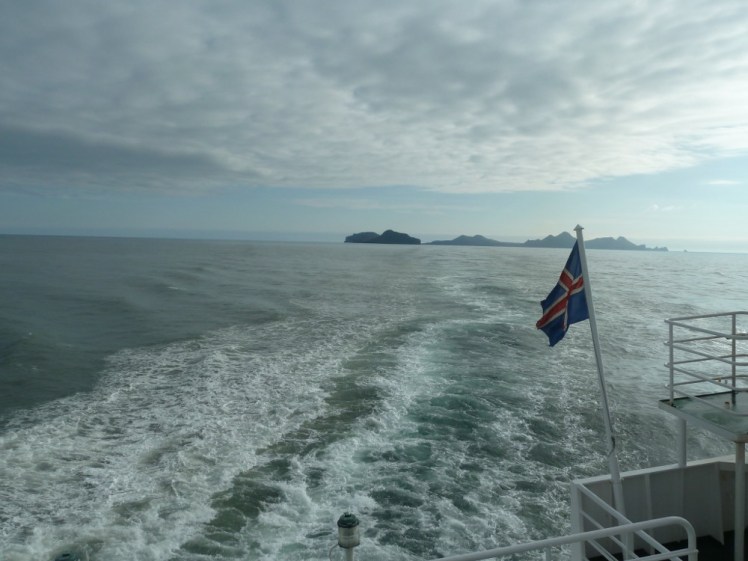
But Icelanders are tougher than that. Once the shock had worn off and the volcano had settled in, they returned. Some of them retrieved possessions, some of them moved back despite the pyrotechnics in the back garden and some of them came back to fight.
The lava was heading north and was threatening to close off the harbour. I’ve already said fishing was a big, big deal for Heimaey but the Heimaey fishing industry was also a big deal for Iceland. It was of national importance to save the harbour. Yes, it sounds mad but the islanders fought the volcano to save the harbour. How do you fight a volcano? You can’t just pop a cork in it. But what you can do is exercise a certain degree of control over the lava flowing from it. They had limited success with walls and barricades – as you can imagine, the lava is more likely to swallow a wall than be diverted by it and there’s no point in digging trenches, it just fills up and then oozes over. What works reasonably well is spraying it with cold water to “set” it faster and a small island in the North Atlantic has no shortage of cold water. They set up a system of hoses and they slowed that lava down. I don’t think even an infinite supply of liquid nitrogen would stop it in its tracks but they slowed its progress and that gave them a little more control over directing it.

There was one bad day. Baby volcanoes have very thin unstable crater walls, too high for their own good. The Geldingadalur newborn volcano’s crater wall collapsed at least twice in the first three days and it happened with Eldfell as well. Of course, what a volcano considers “thin and unstable” is anything but when it comes floating down on the lava flow – a red-hot chunk of rock at least a few feet thick. Even if you froze the lava underneath it, gravity is going to make sure its continues its journey downhill and there’s literally nothing you can do to stop it.

Here came Heimaey’s second piece of huge luck. The semi-molten raft broke in two and just stopped well clear of the harbour. I suppose they still had to worry that another flow would give it a push and get it going again but the worst of the danger was past.
Eldfell continued erupting until early July. Heimaey was 20% bigger than it had been in January, with 2.5 square kilometres of land added to the north-east side, although new lava is very susceptible to erosion and it’s shrunk a little since then. Even better, it had created a kind of natural breakwater at the harbour entrance – not only did it not destroy the harbour, it actually improved it, making it much more sheltered.
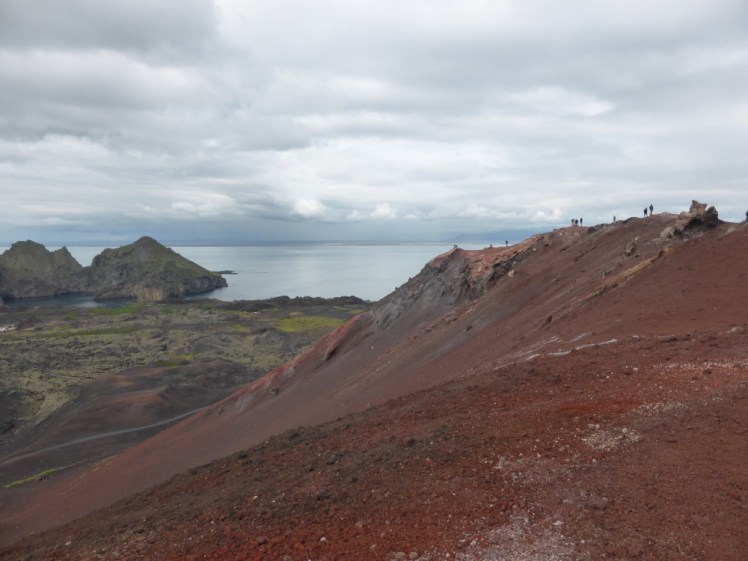
The locals began to dig out their homes – the ones under the lava were mostly done for, they’d have been burnt to a cinder and probably collapsed under the weight of new rock forty metres thick, but the ones buried under tephra were, in some cases, salvageable. Later digs done for archaeological purposes rather than moving-back-in purposes were called the Pompeii of the North, although Pompeii was buried by a pyroclastic flow, not tephra. Quick volcanology lesson: Tephra, also known as pyroclast is the rocky stuff that gets showered out of a volcano and ranges in size from dust to hailstones and the occasional volcano bomb the size of a football or even a boulder. Eldfell produced liberal amounts of tephra. Pyroclastic flow is also tephra – the clue’s in its name pyroclast but it’s very specifically when a column of ash & volcanic filth rising up into the sky becomes too heavy and falls back down to Earth. It moves downhill at an incredible speed, can roll straight across water and it destroys anything in its path.

In 2016, I went to Heimaey. Well, I went in 2012 but I didn’t climb the volcano until 2016. I walked up from the harbour, decided it would be easier to cut across the lava field than to walk up to the volcano’s foot through town (readers, I was wrong!) and followed the trails up to the summit. The lower slopes are gradually becoming grassy, the locals having sown grass seed to stabilise the soil, but everything else is a kind of burnt red, which I presume points to a certain amount of iron in the lava. It’s quite crumbly and it crunches underfoot. The entire north side of the crater is open where that piece fell out and it looks a bit like a giant ampitheatre. Björk once performed at the Kerið crater – if not for the fact that the inner slope is far too steep for seating, this would make an amazing venue. However, there’s already a big grassy natural ampitheatre on the west side of the island where the annual music festival is held.
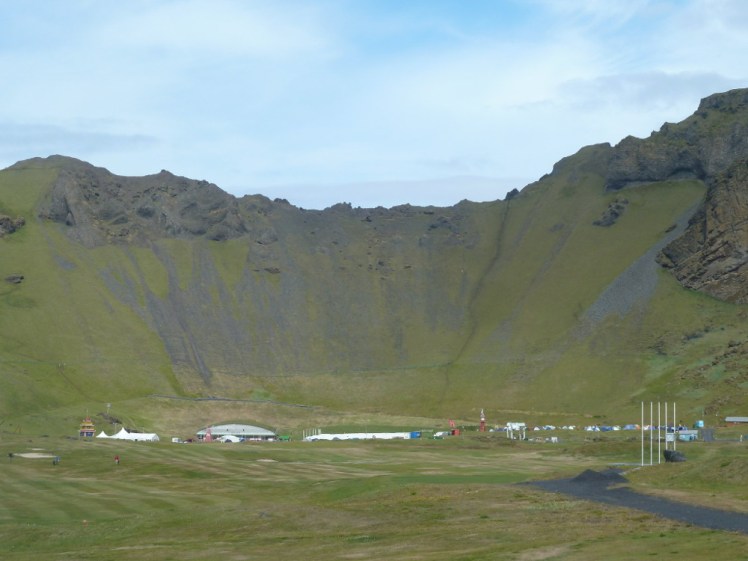
At the top you get a view out to the other islands, across town to the harbour and even to the mainland. And it’s still hot up here. I know volcanoes take a while to cool down – the famous hot spring at Landmannalaugar is heated by a five hundred year old lava flow – but I was surprised to find that the ground is warm if you just scuff away half a layer of gravel 43 years after the eruption finished. Then there are plenty of little holes and miniature caverns. I encountered a family of volcanophiles making toast and melting chocolate over one of them and I’ll definitely be taking a skewer and some marshmallows next time I go up there.
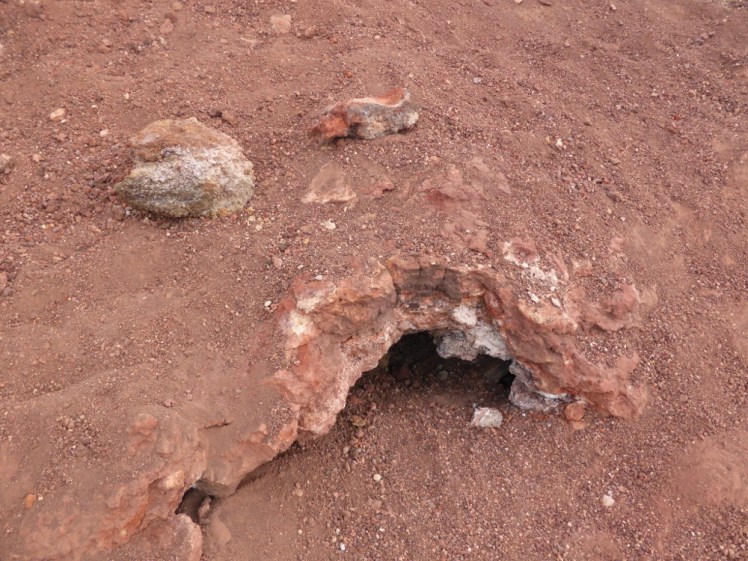

Naturally, Icelanders were seen at the new eruption less than two weeks ago, already using the new lava flow to make popcorn and toast various things. It wouldn’t have been my first thought, on seeing the new eruption but why not? Icelanders have been cooking on volcanic heat for centuries. I look forward to sitting on the new crater in a few years, when it’s cool enough, just like I sat at the top of Eldfell.

One thought on “Eldfell: the people who fought a volcano”